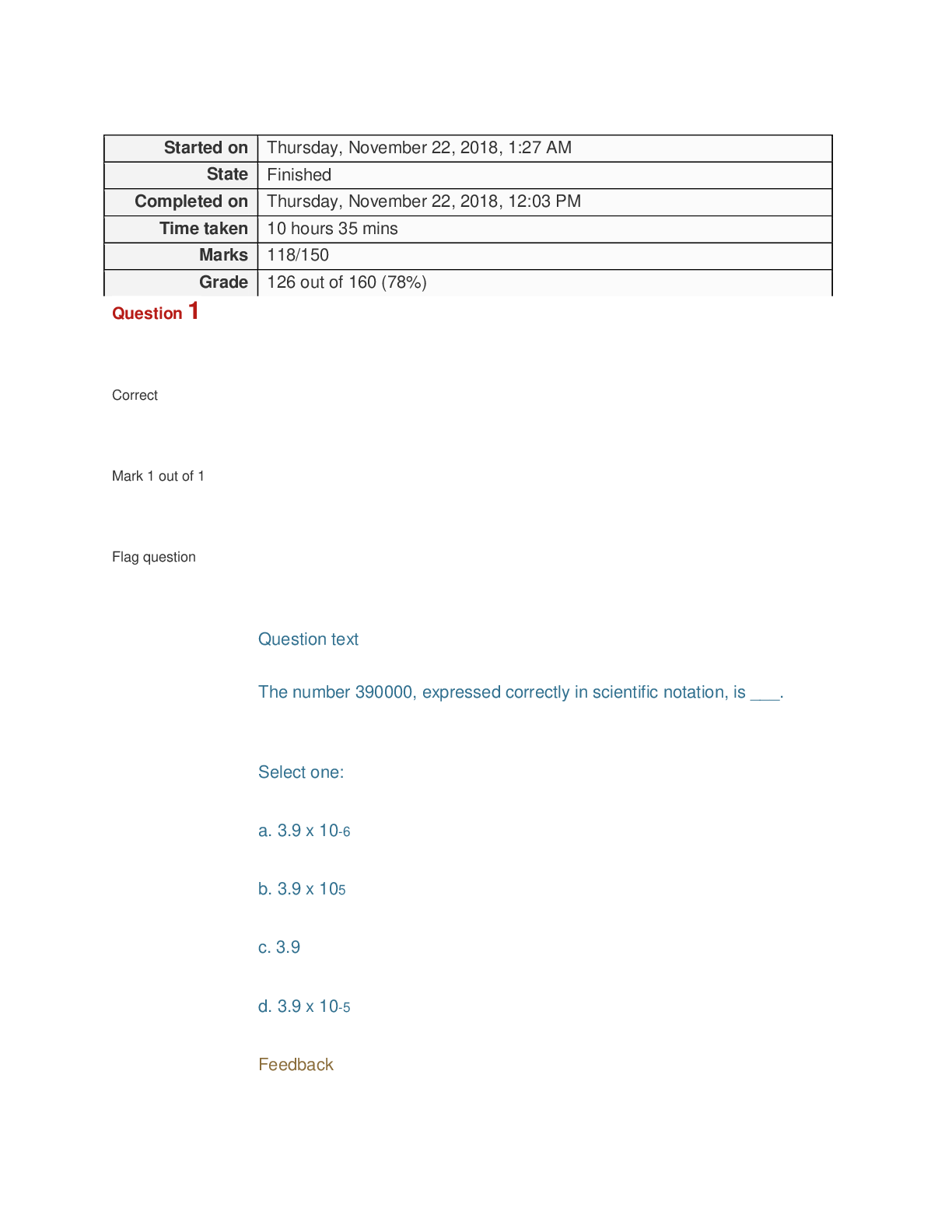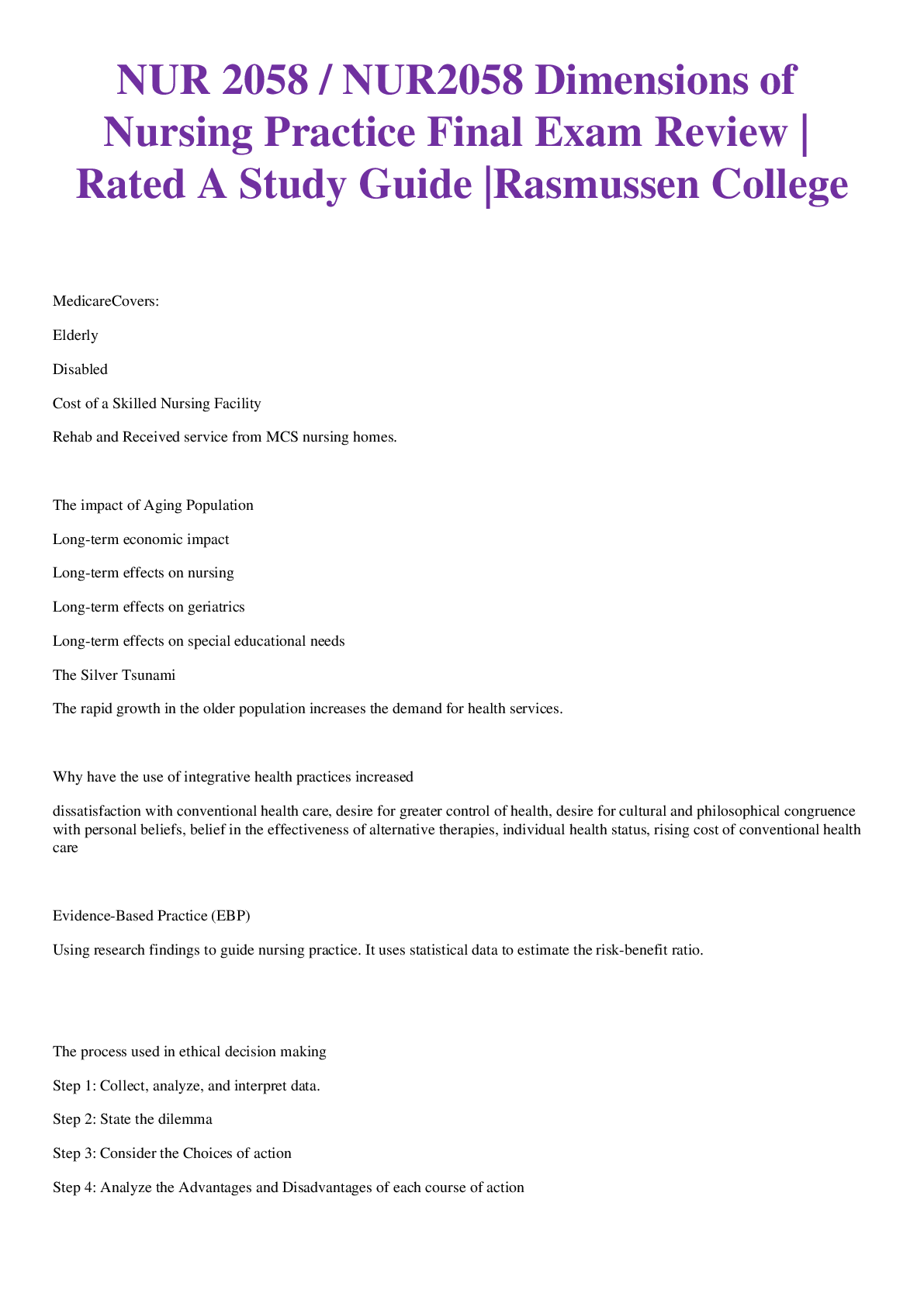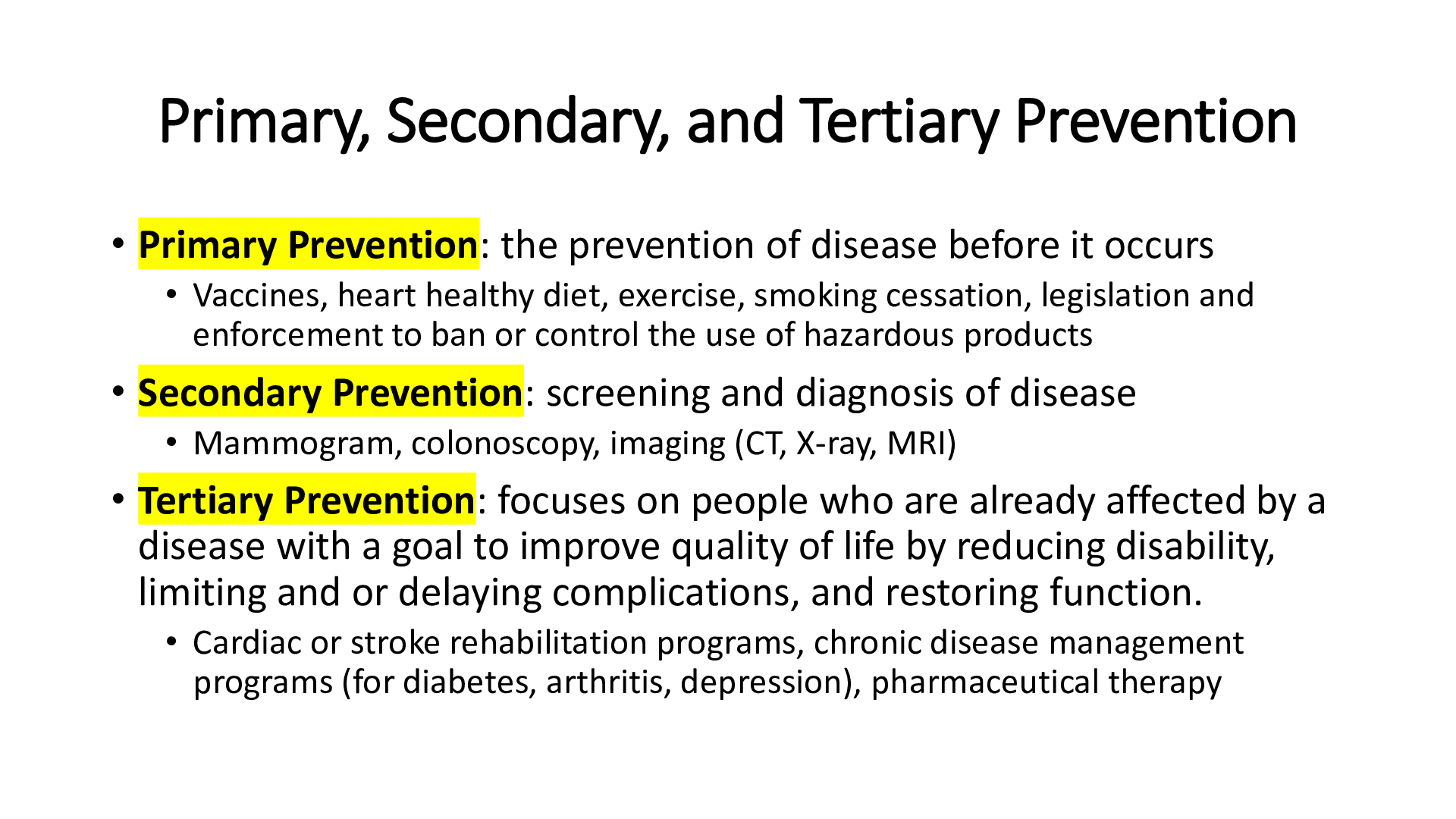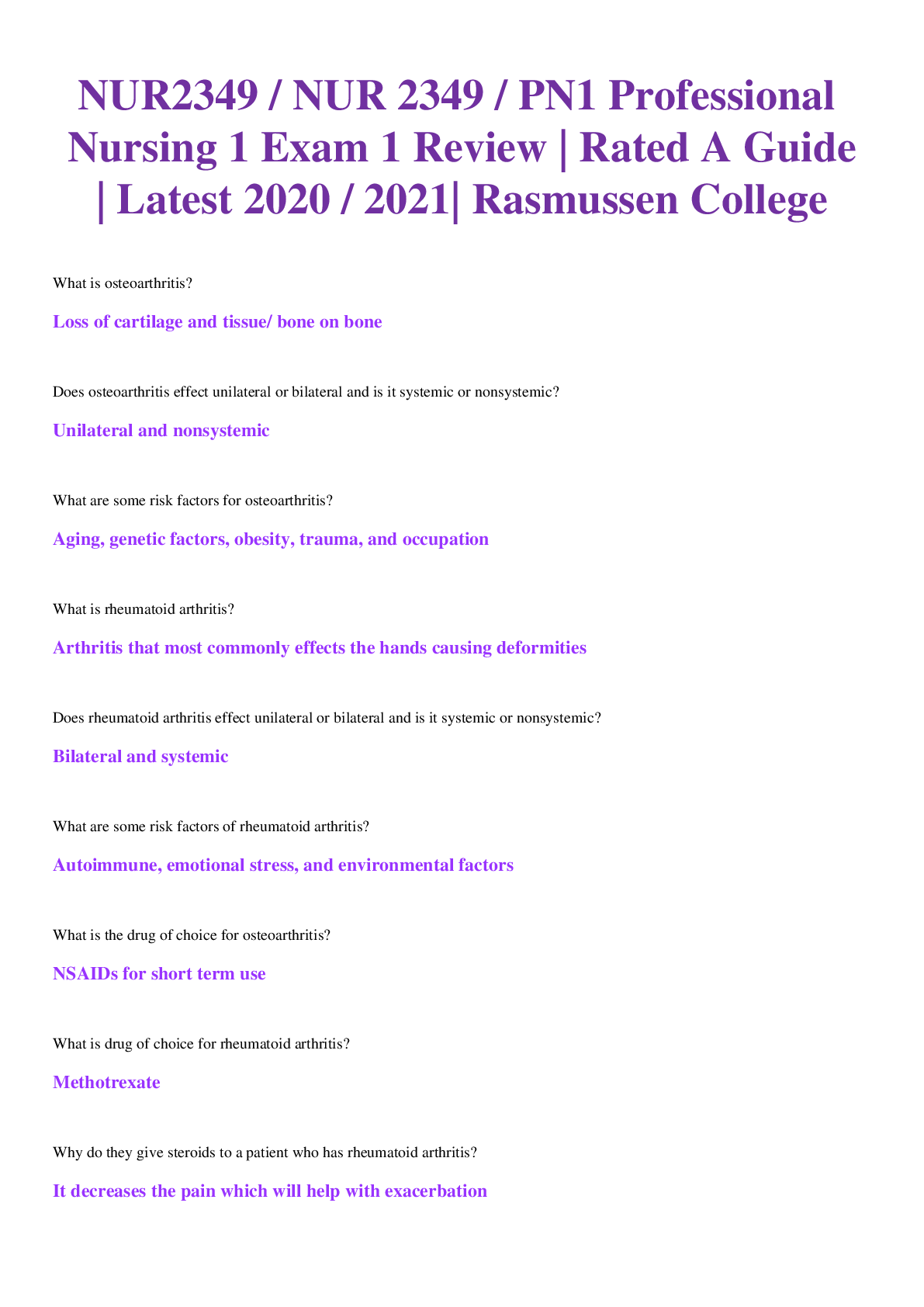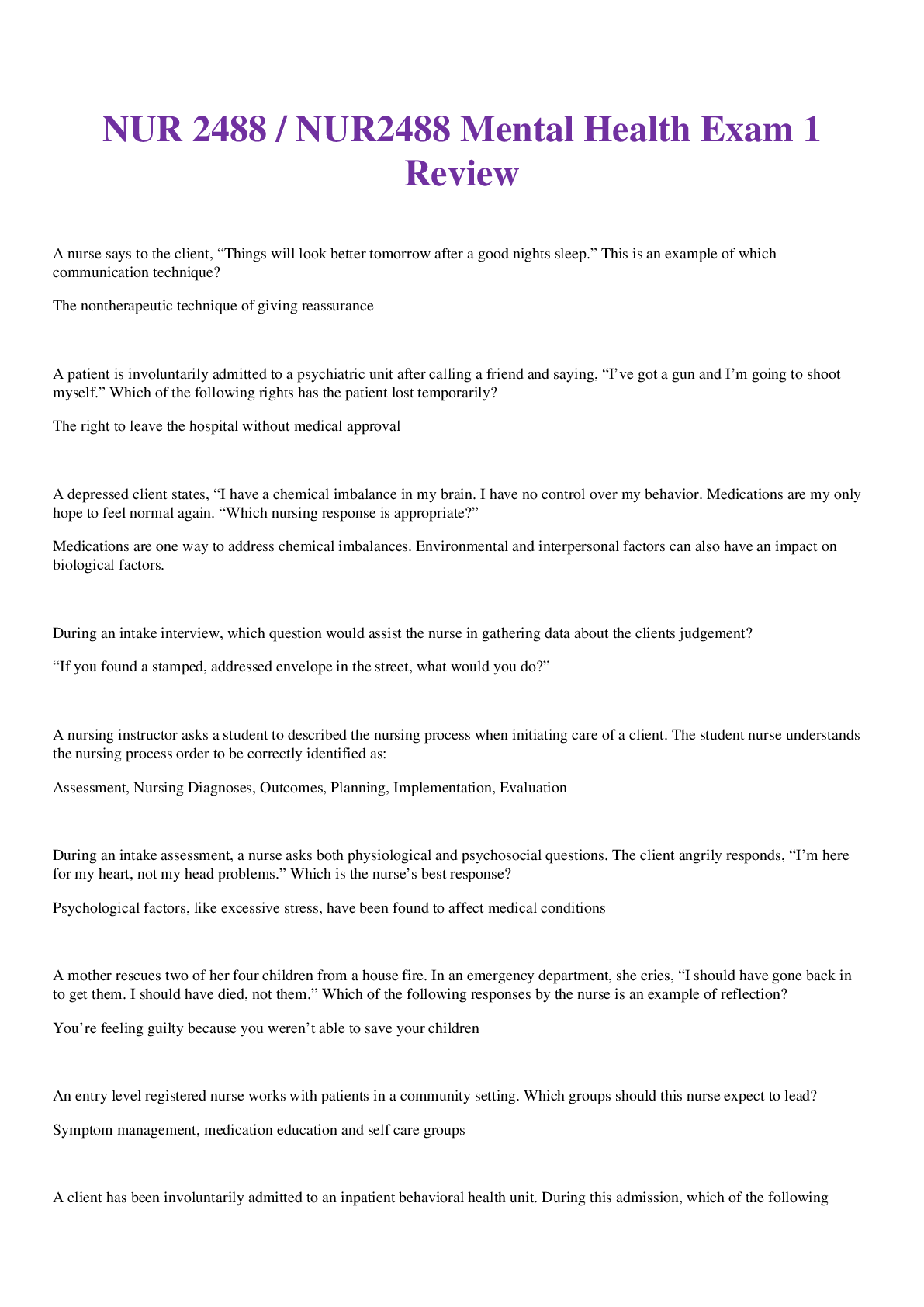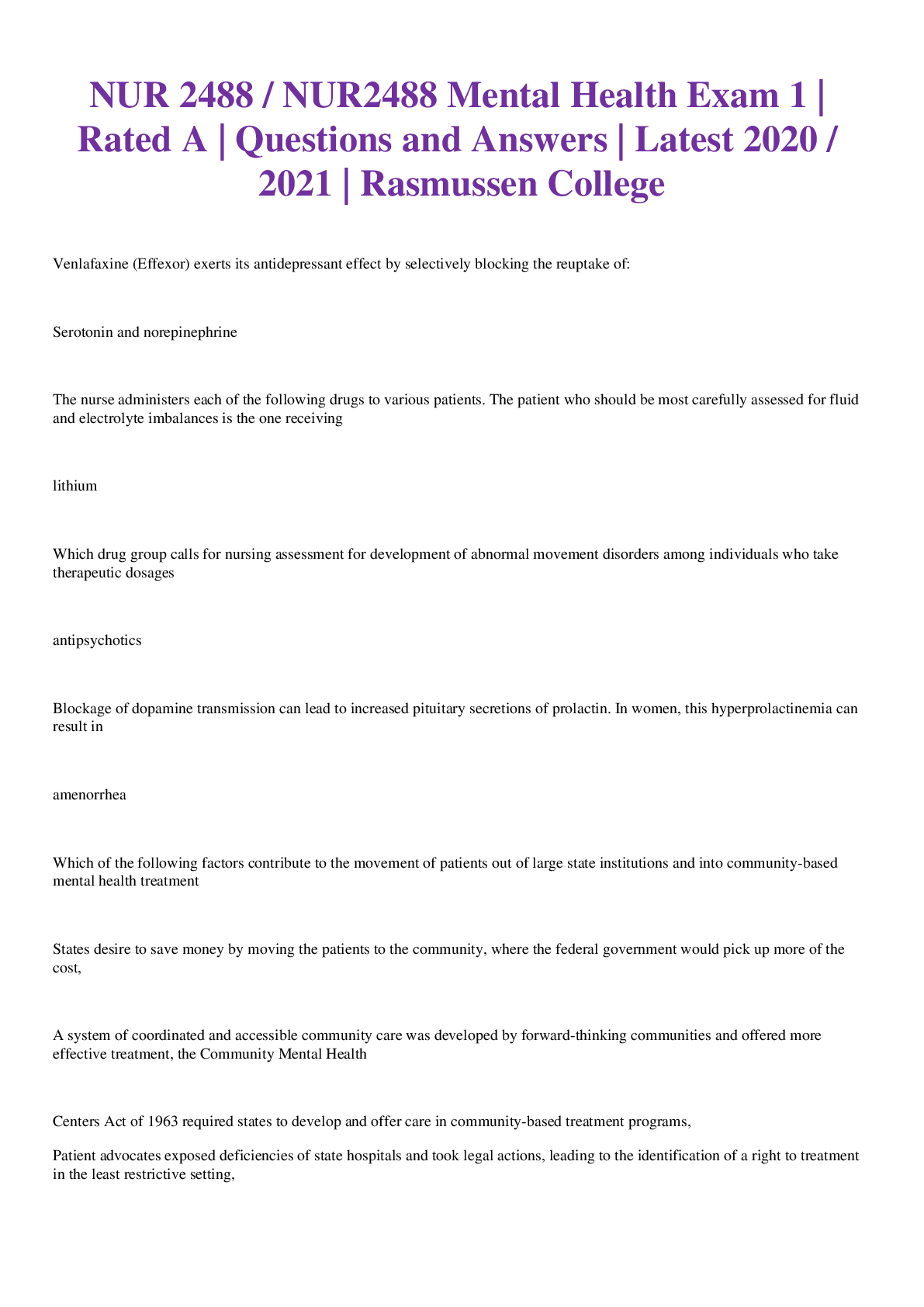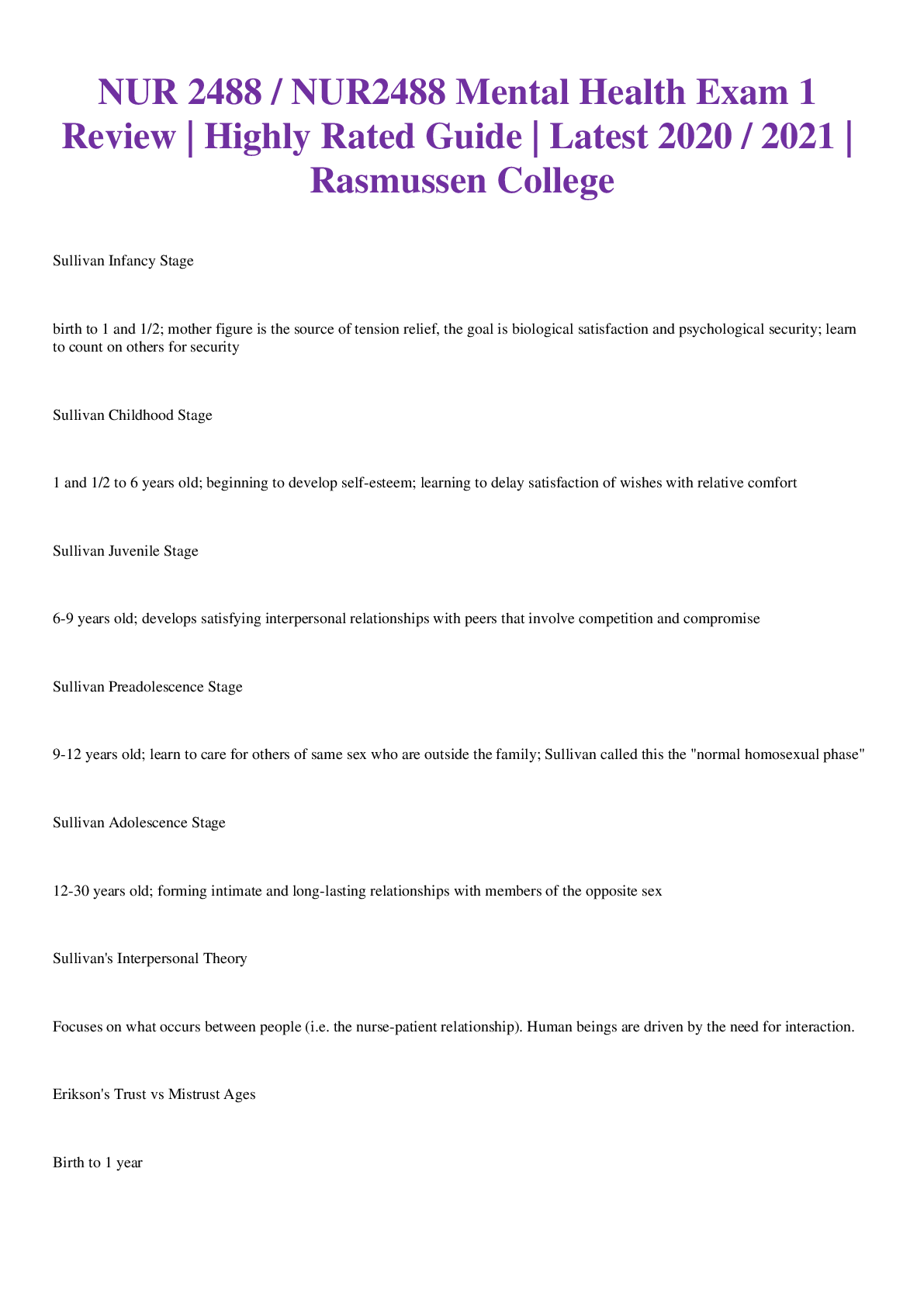*NURSING > EXAM REVIEW > PATHO EXAM 1 REVIEW (All)
PATHO EXAM 1 REVIEW
Document Content and Description Below
Question 1: Which hormone is responsible for lactation and interferes with ovulation? a) Growth hormone b) Testosterone c) Estrogen d) Prolactin Response Feedback: Prolactin is responsible for la... ctation and breast development while interfering with ovulation. Growth hormone affects protein, lipid, and carbohydrate metabolism. Testosterone regulates male secondary sex characteristics and libido. Estrogen attenuates the HPA stress response. It also regulates female secondary sex characteristics. Question 2: Abnormal new cellular growth is referred to as a) Apoptosis b) Correct Neoplasia c) Proto-oncogene d) Suppressor genes Response Feedback: Neoplasia means abnormal new growth. Apoptosis is the ability of the normal cell to respond to signals instructing the cell to commit suicide. Proto-oncogenes code for components of cellular growth activating pathways. Tumor suppressor genes inhibit cell proliferation. Question 3: Which condition explains the genetic basis for cancer development? a) Decreased immune function b) Exposure to ionizing radiation c) Infection by oncogenic bacteria d) Loss of or defect in tumor suppressor genes Response Feedback: Tumor suppressor genes inhibit cancer proliferation pathways. Decreased immune function and exposure to ionizing radiation may be factors but not the basis of cancer development. Infection by oncogenic bacteria is not a factor, since bacterial infection is not relevant. Question 4: Signs and symptoms of a disease first occur during the a) Acute phase b) Latent period c) Subclinical stage d) Prodromal period Response Feedback: The prodromal period, or prodrome, refers to the appearance of the first signs and symptoms indicating the onset of a disease. During the acute phase, the disease reaches its full intensity, and signs and symptoms attain their greatest severity. If the disease has a latent period, the signs and symptoms may become mild or even disappear for a time. A number of diseases have a subclinical stage, during which the patient functions normally, although the disease processes are well established. Question 5: Which term is used to describe an objectively identifiable aberration of the disease? a) Syndrome b) Symptom c) Sign d) Stage This study source was downloaded by 100000831777157 from CourseHero.com on 07-02-2022 11:07:21 GMT -05:00 https://www.coursehero.com/file/71772629/PATHO-EXAM-1-REVIEWdocx/ Response Feedback: A sign is an objectively identifiable aberration of the disease. A syndrome is a collection of different signs and symptoms that occur together. A symptom is a subjective feeling. The clinical manifestations of some diseases may change significantly over time, resulting in a completely different clinical presentation at different stages (periods in time). Question 6: Cellular hypoxia results in a) Increased pH b) Enhanced ATP activity c) Loss of intracellular calcium d) Failure of the sodium-potassium pump Response Feedback: Hypoxia is a loss of oxygen to the cell that causes ATP activity to cease. ATP provides the power required to drive the sodium-potassium pump. pH decreases in hypoxia (respiratory acidosis). Hypoxia is a loss of oxygen to the cell that causes ATP activity to cease. Deposits of calcium salts occur in conditions of altered calcium intake, excretion, or metabolism. Question 7: What stage is defined by “fight or flight”? a) Alarm b) Resistance c) Exhaustion d) Adaptation Response Feedback: Alarm is called “fight or flight” because it gives the body a boost of energy to either run or confront. To survive, the body must move beyond the alarm stage to a stage of resistance (also called adaptation) supportive of the allostatic return to a state of homeostasis. Exhaustion occurs when the body is no longer able to bring about a return to homeostasis following prolonged exposure to noxious agents. To survive, the body must move beyond the alarm stage to a stage of resistance (also called adaptation) supportive of the allostatic return to a state of homeostasis. Question 8: Which of these statements best describes the purpose of the TNM classification system? a) It tracks the progress of the disease and the effectiveness of treatment. b) It provides tumor data for the Centers for Disease Control and Prevention. c) It enables the physician to determine the underlying cause of the malignancy. d) It provides information for ongoing research efforts to develop a cure for cancer. Response Feedback: The TNM classification system is used to stage cancer. The TNM staging system is used to describe the tumor size, lymph nodes affecte [Show More]
Last updated: 1 year ago
Preview 1 out of 5 pages

Reviews( 0 )
Document information
Connected school, study & course
About the document
Uploaded On
Jul 02, 2022
Number of pages
5
Written in
Additional information
This document has been written for:
Uploaded
Jul 02, 2022
Downloads
0
Views
37

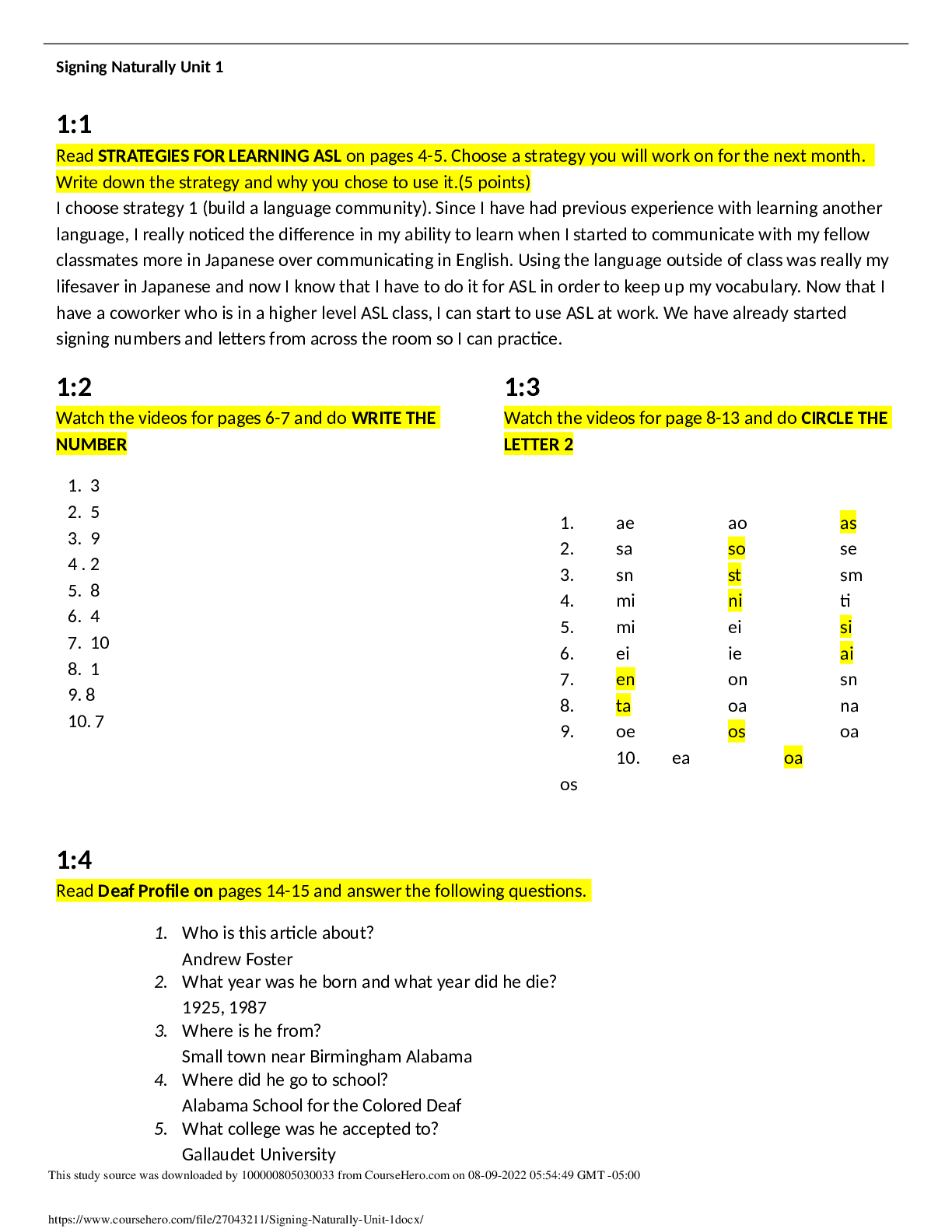

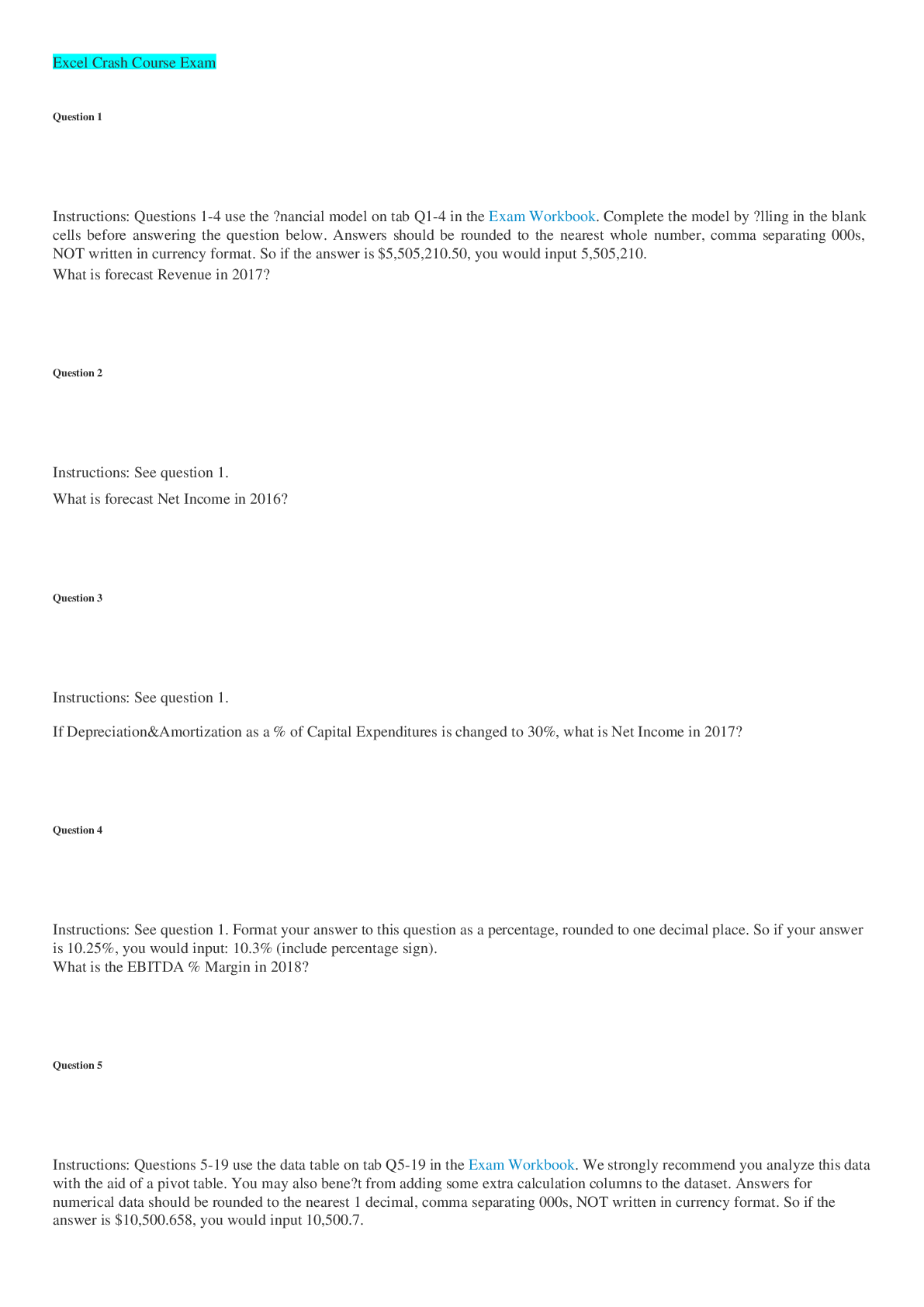
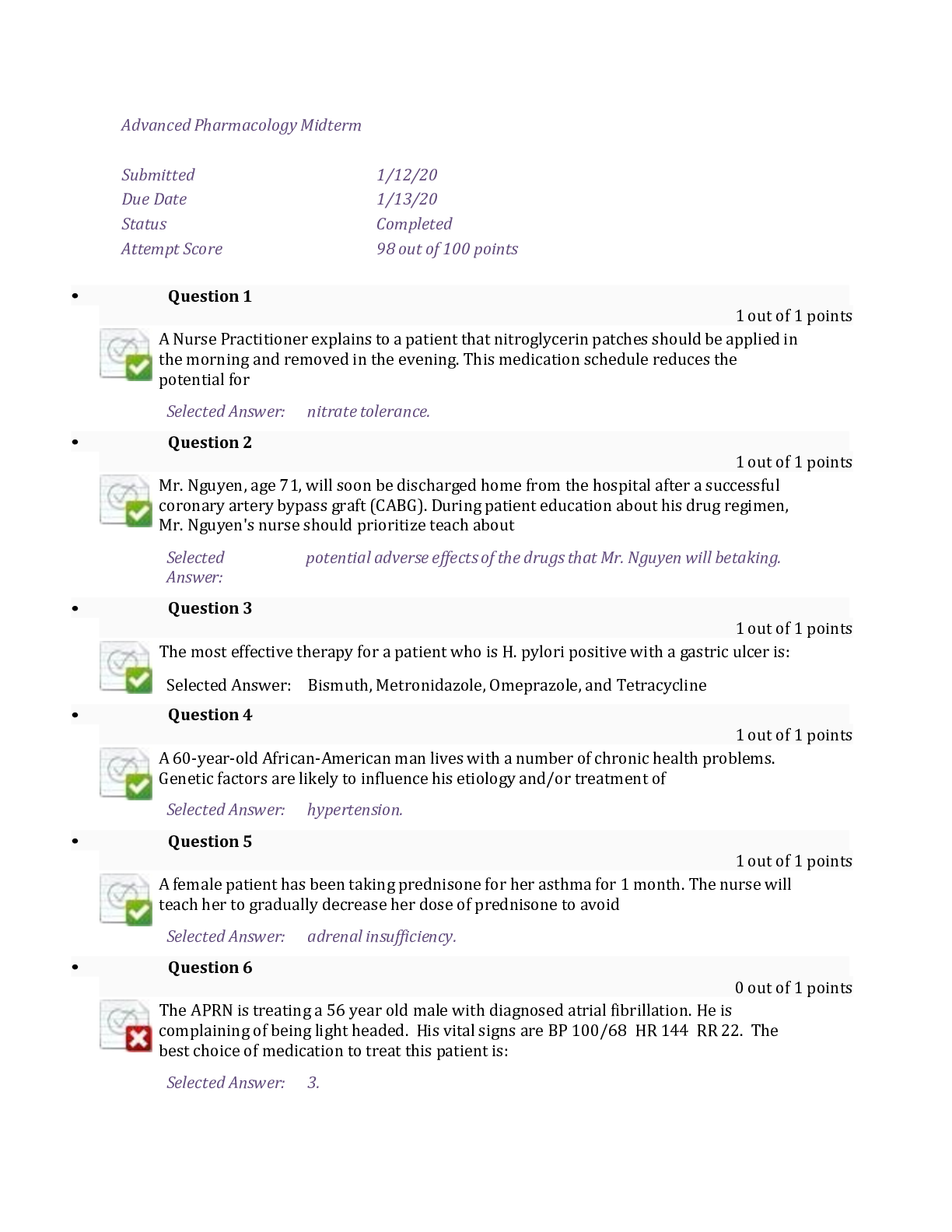

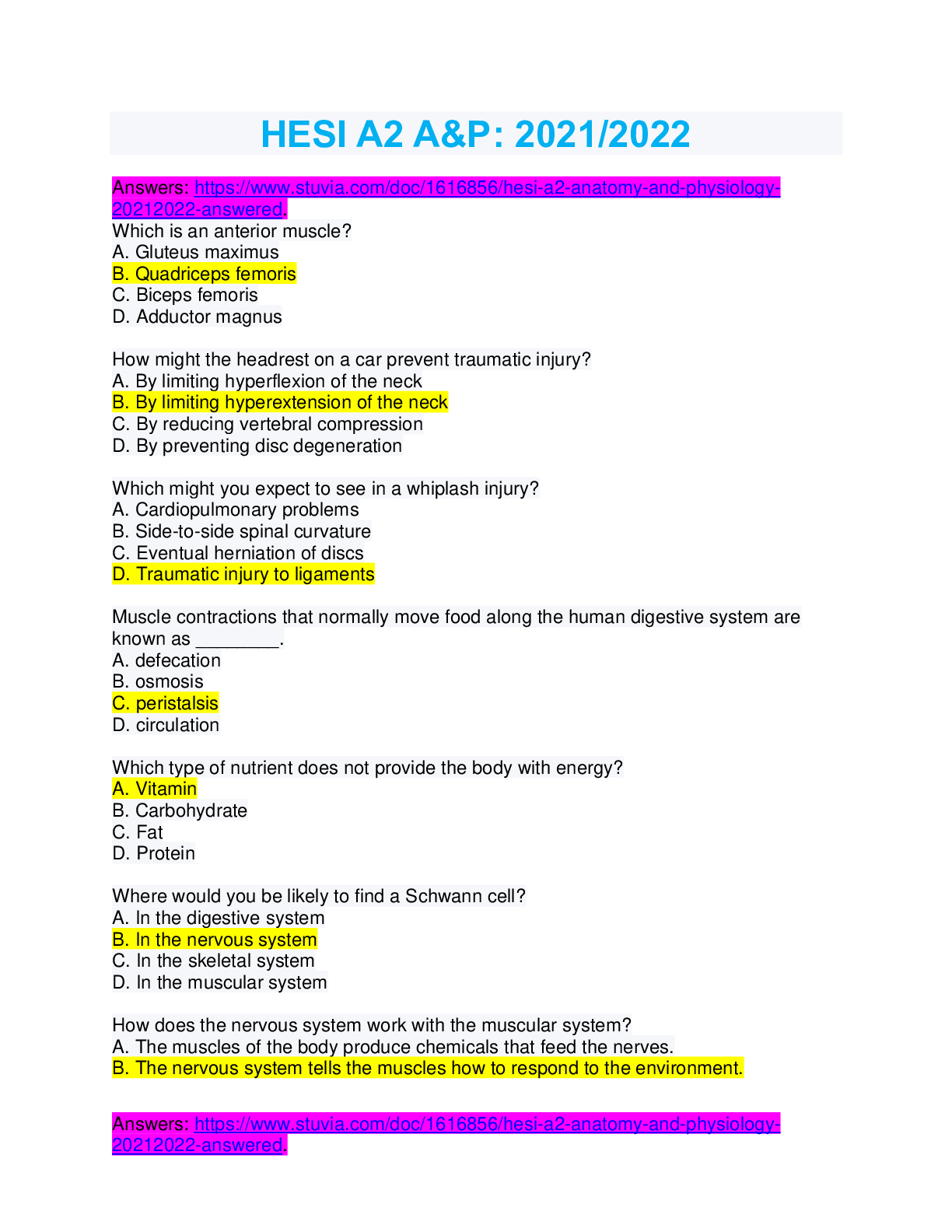
.png)












